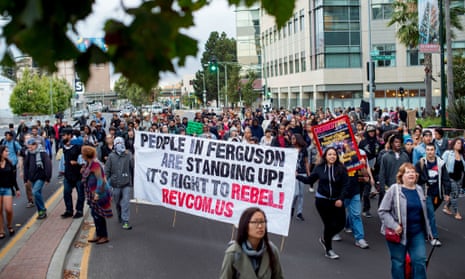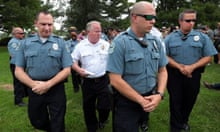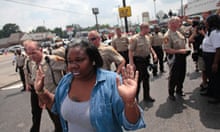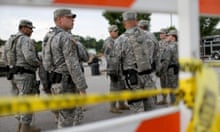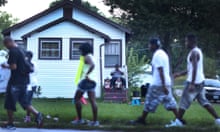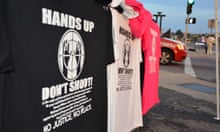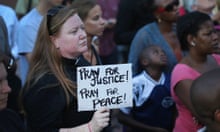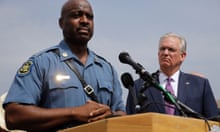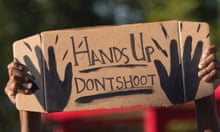Protests in Ferugson have calmed in the 12 days since unarmed 18-year-old Michael Brown was killed by police, but Thursday night brings the second nationwide “Day of Rage” since a police officer brought down the teenager with six bullets.
The solidarity protests are being held in 37 cities , and come after activists organized dozens of demonstrations across the US related to Brown and other recent cases of police killings.
Los Angeles
Police fatally shot unarmed 25-year-old Ezell Ford on 11 August, prompting immediate questions about the circumstances surrounding his death. Hundreds of protesters gathered outside the Los Angeles police department headquarters on Sunday to demand more information.
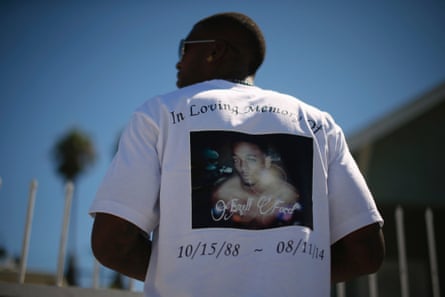
“I want to know what probable cause did those gang officers have when they stopped Ford?” said Cheryl Dorsey, 56, a retired LAPD sergeant told the LA Times. “There’s been no explanation other than a violent altercation ensued. What does that mean?”
Adding to people’s concerns is Ford’s parents claim that their son had been diagnosed with schizophrenia, bipolar disorder and depression. LAPD police chief Charlie Beck met with community members and activists at a meeting on Tuesday night, but his vague responses inspired groans.
The Los Angeles city council on Wednesday settled a lawsuit with the family of Brian Beaird, a 51-year-old man who police fatally shot after he lead police on a high speed chase in December. The city is set to pay the family $5m for killing the unarmed national guard veteran.
New York City
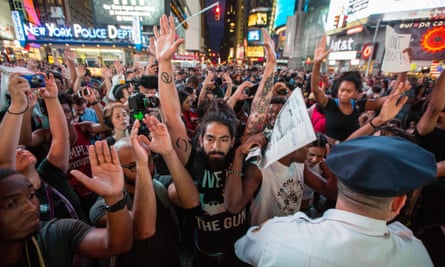
The news of Brown’s death came as the city was responding to controversy about the death of Eric Garner, a 43-year-old who died after being wrestled to the ground by New York police and put in a chokehold.
Last week and on Wednesday, crowds gathered across New York for the nationwide moment of silence in honor of Brown. He will also be remembered in the march for Garner against police brutality that is planned for Saturday.
These events also carry reminders of two other unarmed men who were killed by New York police: Sean Bell, a 23-year-old who was killed by New York police on the night of his bachelor party in November 2006 and Amadou Diallo, a 22-year-old who officers fatally fired 41 rounds at.
Oakland

Activists in Oakland, California, have held several protests for Brown over the past 12 days, including a rally on Wednesday night that attracted hundreds of people.
These protests are reminiscent of those held after a Bay Area Rapid Transportation (Bart) officer killed unarmed 22-year-old Oscar Grant in 2009. Members of Grant’s family met Brown’s family during a week-long trip to Ferguson, where they also protested.
Last week, an Oakland protest attracted Jeralynn Blueford, the mother of Alan Blueford, a 18-year-old who was shot and killed by an Oakland police officer in 2012. Government officials and relatives dispute whether or not Blueford was carrying a gun when he was killed and the family’s attorney is working to get a federal investigation into the case.
“This is not ‘Protect and serve,’ this is ‘Shoot to kill,’ and I can’t get my Alan back,” Blueford said. “But I can stand up and say, ‘I’m not taking anymore.’
Washington DC
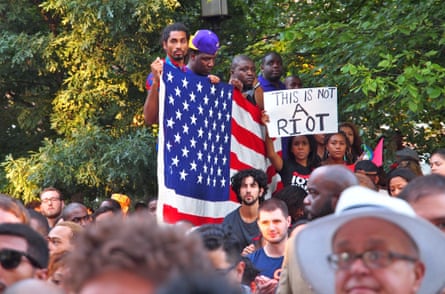
US attorney general Eric Holder returned from Ferguson to Washington DC on Thursday after meeting with officials and community leaders and being briefed on the federal investigation into the Brown shooting.
In the federal government’s capital, demonstrators have held solidarity protests for Brown, chanting “Hands up, don’t shoot”.
Last month, the Washington Post editorial questioned the findings of a US attorney investigation into the death of Miriam Carey, a 34-year-old woman who secret service and US capitol police officers fatally shot after Carey tried to breach the US Capitol and White House with her car.
Carey’s one-year-old daughter was in the car with her during the October 2013 shooting.
